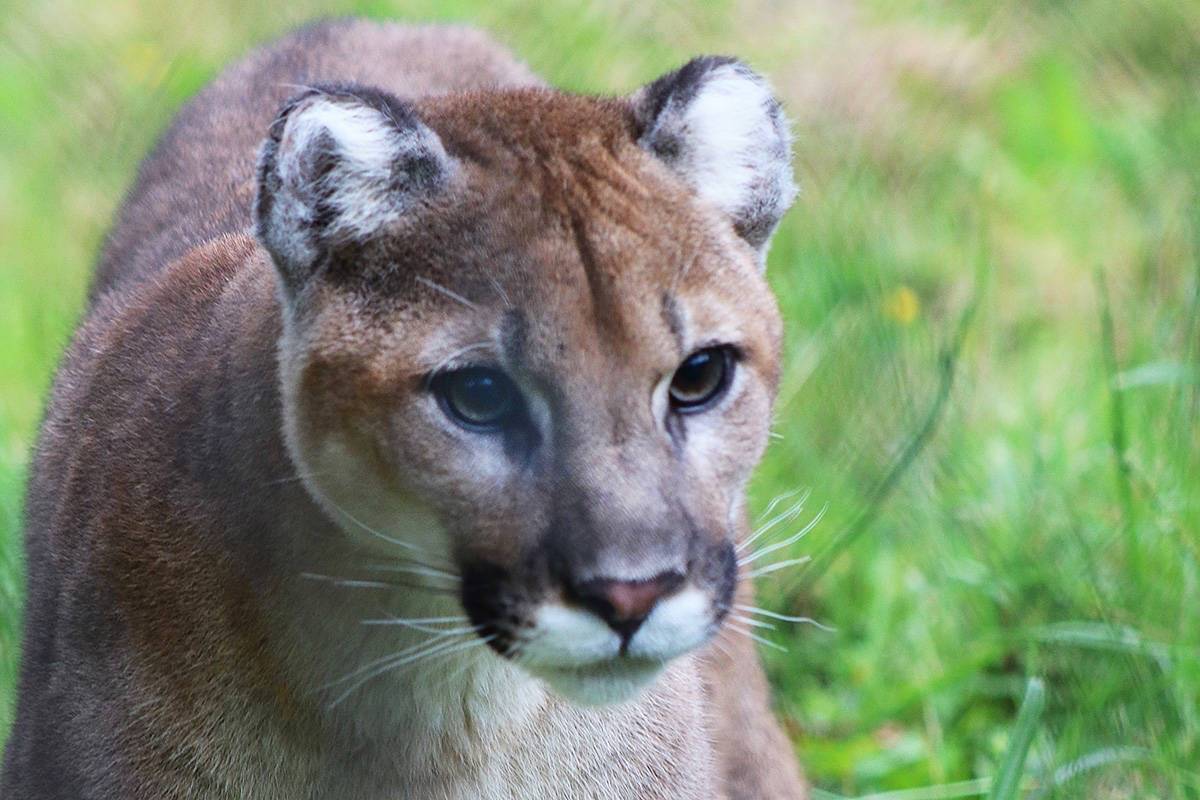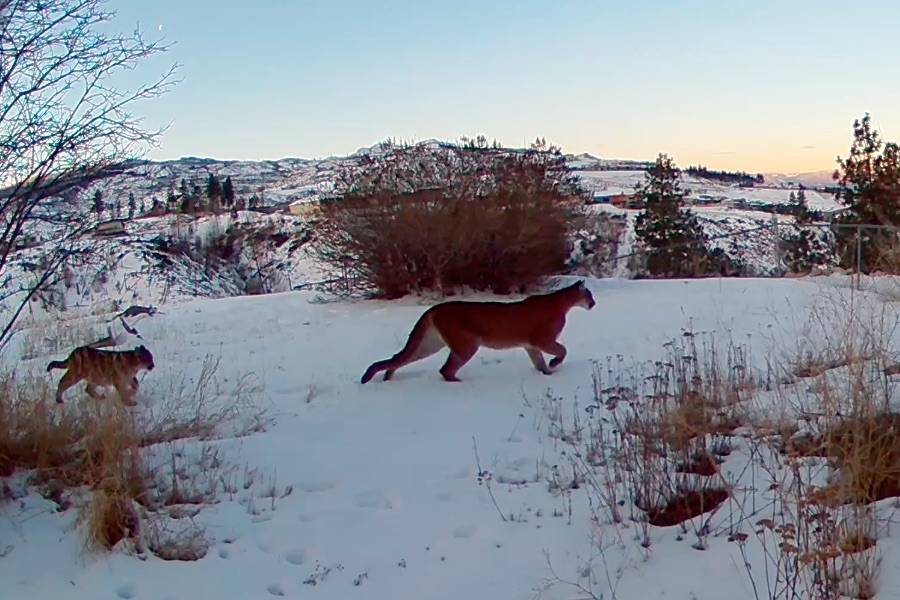With recent cougar attack news making headlines locally and abroad, you might imagine a young mother鈥檚 concerns to hear that one of these large cats is lurking in her neighbourhood.
I鈥檓 not talking about the middle-aged woman up the hill, full of botox and bleach, who preys on young married men.
Although there have also been sightings of this breed around my home, it is the four-legged one that I speak of now.
I had heard a rumour of a cougar in our Vernon neighbourhood, but living in a semi-rural area wildlife sightings are fairly common.
This is the time of year when these wild animals are feeding on animals closer to the valley bottom. In fact, a cougar has been spotted living right next to my daughter鈥檚 school, BX Elementary.
See:
Conservation Officer Tanner Beck said that the deer come down from the mountains for food in the winter and the cougars follow, which is why this cat is hanging around.
Since deer are one of the cougar鈥檚 primary food sources, there is a good possibility of finding cougars using an area where deer are abundant, especially a wintering area, according to WildSafe BC.
Our daughter was alerted to the cougar sightings at school and in our neighbourhood, and has since been too scared to walk to the bus stop.
But with Girl Guide cookie season in full swing, my little Guide was eager to go door-to-door Wednesday evening.
Thanks to the time change, she was able to head out during daylight down the road in our cozy little neighbourhood, heading to the end of the street where her friend lives.
Standing at their door knocking, she realized no one was home but then heard rustling in the cherry orchard behind her.
Feeling like something dangerous may be lurking, she retreated towards home. Another neighbour spotted her and quickly ushered her inside as dogs in the area were barking, alerting that something was in fact in the vicinity.
Thankfully, this neighbour was more educated on the situation and knew my little one shouldn鈥檛 be out alone as dusk was nearing (dusk=dinner time for cougars).
I received a phone call from this scared little girl, who was promptly picked up.
Seeing my daughter鈥檚 fear, the neighbour assured her that cougars prefer to feed on four-legged animals, like raccoons and dogs, not two legged ones.
Yet WildSafe BC states that cougars may view children as prey due to their small size, high-pitched voices and quick movements.
Our neighbour has been vigilant and made posters alerting that the cougar was first spotted on Monday, March 11, and listing some tips for safety.
She advised us that the large cat has in fact been seen sleeping on another neighbour鈥檚 deck for the past four nights and despite attempts to scare the cougar off by pots and pans and banging on the patio door, it will not go away until it wants to (typical cat).
And this is a large cougar.
The Conservation Office has been alerted to this cougar in the area and is monitoring the situation. But this isn鈥檛 the only cougar on their radar.
Cougars are in the valley bottom across the region, including several in Cherryville that have killed one dog and attacked two others.
Conservation officers recommend the following:
- supervise children when outside
- keep pets in at night
- walk pets in pairs/groups
- stay away from bushes, interface, trees and remain in the open
- make noises when in your yard
- eliminate wildlife attractants such as outdoor pet food, unsecure animal feed, scattered bird seeds or unsecured compost bins
These food sources attract rodents and raccoons, which in turn attract cougars. So if we can eliminate the food source it is likely that once the snow melts, the deer will move up the mountain and the cougars should follow.
But if cougars continue to access easy meals, they may not leave.
And sadly, these animals will not be destroyed until they have attacked, therefore the safety of our children remains at risk.
See:
To report a cougar sighting, or sighting of footprints, call the Conservation Hotline (24/7) at 1-877-952-7277. It is important to report and build a file of the cougar鈥檚 behaviour and sighting so the animal can be easily located.
To educate yourself and family, visit .




